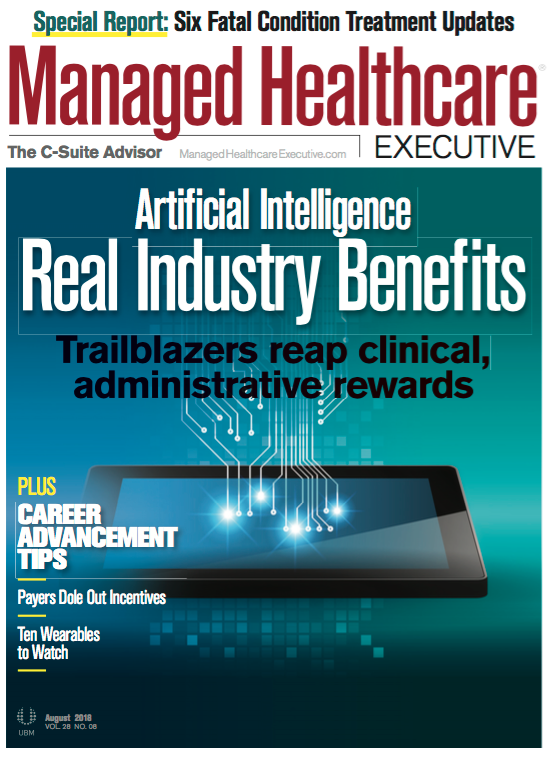Two Changes Needed to Tackle Healthcare Costs
From EHRs that didn’t fulfill promised savings to a system that still rewards volume over value, our experts examine what’s next in the quest to cut the fat from healthcare spending.
Richman

Hepp

The United States continues to outspend other high-income nations in healthcare without superior outcomes, despite efforts to transition to value-based care and new reimbursement models. The U.S. spent 17.8% of its gross domestic product on healthcare in 2016 compared to an average of 11.5% in similar nations, according to a report from The Commonwealth Fund. Outsourcing, streamlining operations, and changing reimbursement models have made some progress, but real improvement must come from innovative new strategies. Here are some of the biggest areas of promise to watch.
- More advanced interoperability
EHRs, which were initiated with the promise of improving care and reducing costs, have not fulfilled that mission as hoped, says Barak Richman, JD, PhD, a member of the Health Sector Management faculty at Duke’s Fuqua School of Business and is a Senior Fellow at the Kenan Institute for Ethics. Richman co-authored a study in JAMA, in which he details the time and cost associated with various billing and administrative functions, and in which he finds that EHRs have resulted in little improvement.
On the clinical side, Richman says EHRs should make health data available to patients and physicians to help in diagnosing and identifying the most effective medical regimens. But to do that, these systems need to be rebuilt around the patient, he says. “You have to have an architecture that wherever the patient goes, whoever they see, those records should be readily available,” he says. “And I don’t think we have a health record architecture in this country that can do that.” Simplification is needed to move forward, he says, pointing to the electronic healthcare cards that contain centralized data that are used by patients in countries like France.
Centralizing and streamlining data would offer patients more control over their health choices and spending, he says. Increased efficiencies through a system that is more user-friendly and allows patients to access and aggregate their own data could save a lot of trouble-and dollars. “The more we digitize records and take them out of these silos, the more we can do that,” he says.
While efforts to improve interoperability are underway, Richman says there is a long way to go. “I think the next step is that the industry is trying to figure out how to work around EHR systems. Which is a sad irony. You build up this huge infrastructure to do what you want to do, and now we see the best way to do the things you want to do is to work around it.”
2. More use of artificial intelligence
Artificial intelligence (AI) is garnering attention in terms of streamlining administrative costs and patient care, says Pamela Hepp, JD, MPH, a healthcare consultant with Buchanan Ingersoll & Rooney. “There are various sources of administrative waste within the healthcare system, including inefficiencies in the delivery of care from duplicative services, medication errors, and other types of clinical errors that lead to additional services and/or increased morbidity.”
In addition, physicians report that they are overloaded with data, Hepp says, leading to inefficiencies in care delivery. “Artificial intelligence can winnow down the amount of data necessary to that which is essential for physicians to make decisions,” she says. One example is streamlining the many treatment options physicians face for every patient.
“Artificial intelligence can analyze information regarding all patients for which such treatment options have been utilized to predict how patients may react to a given drug or treatment plan, thereby developing a more effective patient-specific treatment plan and improving patient compliance and outcomes,” Hepp says. “Artificial intelligence may also help to streamline the clinical trial process by gathering and analyzing data across study sites in a more cohesive and comparative way.”
To be successful, the information provided to physicians must be manageable in terms volume as well as understandable and useful, Hepp says. It’s not enough to know how many patients have heart failure, for example. But, knowing which medications and treatment modalities improve outcomes with less hospitalizations is useful. That’s where AI comes in, it can analyze volumes of data to infer evidence-based strategies and functions that help patients and reduce costs, Hepp says.
The artificial intelligence technology of today has a greater capacity to analyze, solve problems, and make decisions, Hepp says. The concern going forward, she says, will be making sure this technology is affordable and secure.
“Value-based payment systems, population health management, and other clinical uses of artificial intelligence require the development and implementation of a technology infrastructure across all providers involved in the care spectrum. Such technology is expensive and there are regulatory constraints as to how such technology can be deployed by a health system to independent providers within the community,” Hepp says. “Many providers also view data mining as suspect, and while the use of artificial intelligence for the purposes described can occur in a way that is HIPAA compliant, many providers may be hesitant to share data on a wide scale beyond the traditional treatment, payment, and for their own business operations.”
Rachael Zimlich, RN, is a writer in Columbia Station, Ohio.

Extending the Capabilities of the EHR Through Automation
August 2nd 2023Welcome back to another episode of "Tuning In to the C-Suite," where Briana Contreras, an editor of Managed Healthcare Executive, had the pleasure of chatting with Cindy Gaines, chief clinical transformation officer at Lumeon.
Listen
Automate Your Practice's Workflows with These 5 Tools
October 4th 2023To maintain patient satisfaction and regulatory compliance and reduce potential clerical errors while maintaining high productivity, you can ease your staff’s burdens by automating your practice’s workflows and empower your staff to do more in less time.
Read More